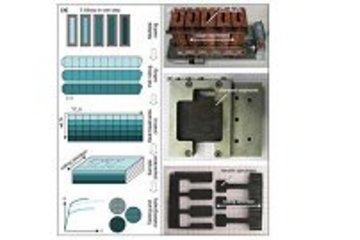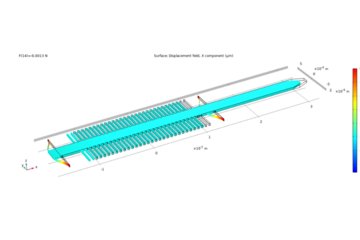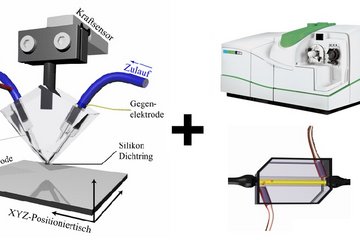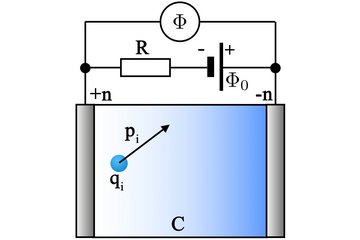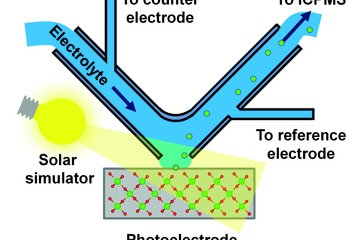All genres
21.
Journal Article
Interface effects on the magnetic properties of layered Ni2MnGa/Ni2MnSn alloys: A first-principles investigation. Functional Materials Letters 9 (6), 1642010 (2016)
22.
Journal Article
Ab initio Prediction of Martensitic and Intermartensitic Phase Boundaries in Ni–Mn–Ga. Physical Review Letters 116 (2), 025503 (2016)
23.
Journal Article
Ab Initio Nonequilibrium Thermodynamic and Transport Properties of Ultrafast Laser Irradiated 316L Stainless Steel. The Journal of Physical Chemistry C 119 (21), pp. 11438 - 11446 (2015)
24.
Journal Article
Interplay of strain and interdiffusion in Heusler alloy bilayers. Physica Status Solidi (RRL) - Rapid Research Letters 9 (5), pp. 321 - 325 (2015)
25.
Journal Article
Ab Initio Predicted Impact of Pt on Phase Stabilities in Ni–Mn–Ga Heusler alloys. Journal of Phase Equilibra and Diffusion 35 (6), pp. 695 - 700 (2014)
26.
Journal Article
Temperature dependent magnon-phonon coupling in bcc Fe from theory and experiment. Physical Review Letters 113 (16), 165503 (2014)
27.
Journal Article
Thickness dependent exchange bias in martensitic epitaxial Ni–Mn–Sn thin films. AIP Advances 3 (12), 122112 (2013)
28.
Journal Article
Ab Initio-Based Prediction of Phase Diagrams: Application to Magnetic Shape Memory Alloys. Advanced Engineering Materials 14 (8), pp. 547 - 561 (2012)
29.
Conference Paper
Stabilization of bcc iron by magnon-phonon interactions. In: PTM 2015 - Proceedings of the International Conference on Solid-Solid Phase Transformations in Inorganic Materials 2015, pp. 709 - 710 (Eds. Chen, L.-Q.; Militzer, M.; Botton, G.; Howe, J.; Sinclair, C. W. et al.). International Conference on Solid-Solid Phase Transformations in Inorganic Materials 2015, PTM 2015, Whistler, BC, Canada, June 28, 2015 - July 03, 2015. International Conference on Solid-Solid Phase Transformations in Inorganic Materials 2015, Whistler, BC, Canada (2015)
30.
Talk
Thermodynamics and symmetry effects in high entropy alloys. Third International Conference on High Entropy Materials, Berlin, Germany (2020)
31.
Talk
Ab Initio Phase Stabilities of High Entropy and Chemically Complex Alloys. TMS Annual Meeting, San Diego, CA, USA (2020)
32.
Talk
Innovative concepts in materials design to boost renewable energies. Seminar of Institute for Innovative Technologies, SRH Berlin University of Applied Sciences, Berlin, Germany (2020)
33.
Talk
Ab initio design strategies for NiMn-based FSMA. 6th Int. Conf. of Ferromagnetic Shape-Memory Alloys CFSMA, Prague, Czech Republic (2019)
34.
Talk
Abnormal magnetic behavior of FeNiCoMnCu high entropy alloys. DPG Regensburg 2019, Regensburg, Germany (2019)
35.
Talk
Tuning magnetic properties of high entropy alloys: A combined theoretical and experimental study. DPG Regensburg 2019, Regensburg, Germany (2019)
36.
Talk
Phonon broadening in high entropy alloys. TMS 2018, Phoenix, AZ, USA (2018)
37.
Talk
Role of temperature dependent excitations and the coupling between them in functional materials: Ab-initio insights. IFM at Linköping University, Linköping, Sweden (2018)
38.
Talk
Temperature-driven effects in functional materials: Ab initio insights. Talk at University Pierre and Marie CURIE (UPMC), Paris, France (2017)
39.
Talk
Lattice dynamics in high entropy alloys: understanding the role of fluctuations. EUROMAT 2017, Thessaloniki, Greece (2017)
40.
Talk
Impact of magnetic fluctuations on phonons: a Green's function-based approach. MPIE-ICAMS workshop, Ebernburg, Germany (2017)






